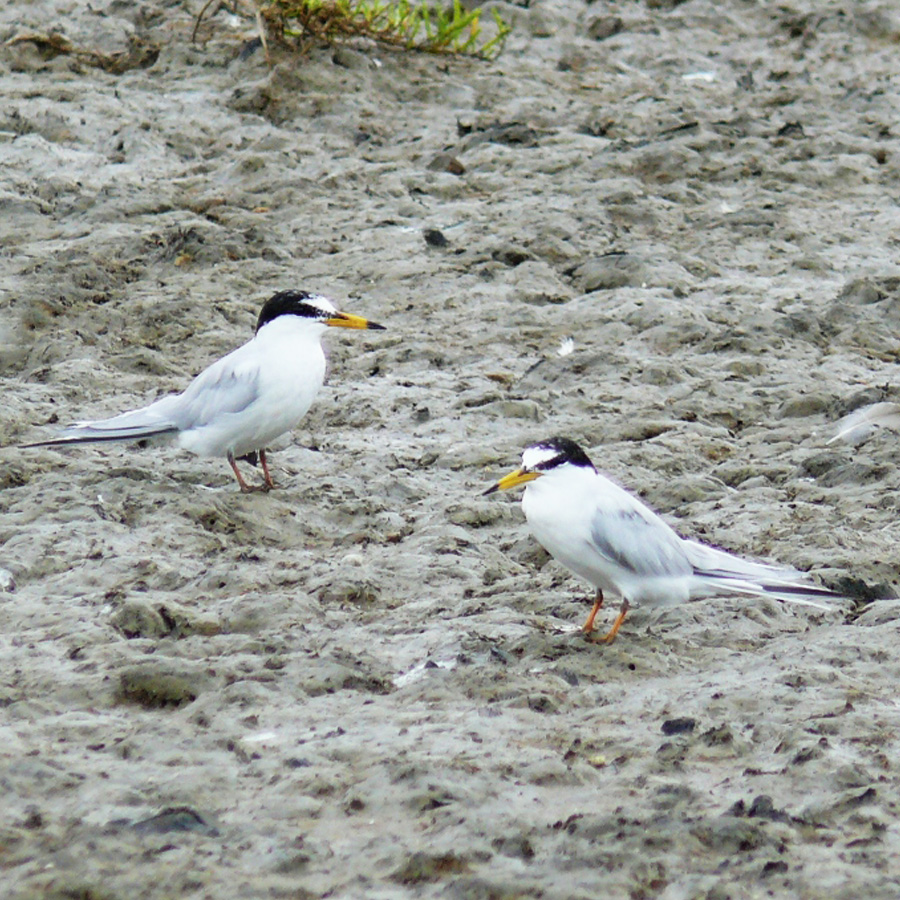Little Tern
Sternula albifrons
Conservation Status
Queensland State: Endangered
Australian Government: Marine and Migratory
Listed CAMBA
Listed JAMBA
Listed ROKAMBA
Species and status overview
The Little Tern breeds on the coast from northwestern Australia, through the Northern Territory, to northern Queensland and south to Victoria and Tasmania, including offshore islands. They nest in small colonies of a single species or in combination with other species such as Fairy terns. In Australia the average breeding colony size is 50 pairs with the eastern sub-population, including those on the Mackay/Whitsunday coast, breeding during the spring and summer.
Sheltered coastal sites such as river mouths, estuaries, deltas, sand dunes and lakes all provide nesting habitat for Little terns especially those with beaches, sandbanks and sand-spits. They have also been known to utilise artificial banks or islands though these are sometimes abandoned as unsuitable due to a lack of stability or overheating. One to three eggs are laid in shallow scrape or depression in the sand, often close to drift wood, seaweed or other debris, however they avoid vegetated areas and will abandon nesting sites should they become overgrown.
Nesting success of the Little Tern at some colonies in eastern Australia is extremely low, it is estimated to be between 6.5-17.9% of eggs resulting in fledglings although this low survival rate can be improved with good management, including a lack of disturbance.
Little terns predominantly feed within 50 metres of the shoreline often close to the breeding colony but will also feed from coastal lagoons and lakes and occasionally in the open ocean. The majority of their diet is comprised of small fish (up to 10 cm) but they will also eat molluscs, invertebrates and crustaceans. They usually forage singly or in small loose flocks.
Where have they been recorded in the area?
- Edgecumbe Bay
- Repulse bay
- Eshelby Island
- Whitsunday Islands
- St Helens Beach
- Bucasia
- Eimeo
- Slade Point
- Mackay Harbour
- Mackay City
- McEwens Beach
- Greenhill
- Carmilla Beach
Description
Reaching only 20-28 cm and 53 g, the Little Tern, as it’s name suggests is quite small for this group of birds. However, what they lack in size they make up for in beauty with an elegant profile of pale grey and white plumage and long narrow wings. While the back and wings are grey they have a white rump, upper tail-covers and tail that has a contrasting black edge. Their breeding plumage differs from non-breeding. Breeding birds have a bright yellow beak with legs and feet of bright orange and a black skullcap. In non-breeding birds, the skullcap recedes to a dark band extending from in from the eyes to the nape merging to dark spotting on the rear crown. Non-breeding birds have black feet, legs and beak. Juveniles are similar to non-breeding adults. The male initiates the courtship ritual by presenting a fish to the female.
Conservation concerns
Highly susceptible to human disturbance during nesting, feral and domestic dogs, cats, rats and foxes all prey on Little Terns. This is compounded by human disturbances such as loss of nests and eggs by trampling, crushing from vehicles or egg loss as disturbed birds may not return to the nest in time to maintain a suitable temperature.
Threats
- Predation and disturbance by feral and domestic dogs, cats and foxes
- Loss or degradation of marine habitats through development or modification of hydrology and landform.
- Loss of the quality and quantity of food supplies from pesticides, other pollutants or over-fishing.
- Disturbance, trampling or crushing of nest sites by humans.
- Natural nest disturbance such as flooding and storm surges, or native predators that may become more common in a changing climate.
What can I do?
- Avoid nesting colonies during spring and summer to minimise disturbance
- Keep dogs on leads and cats indoors
- Raise awareness of Little terns within your community
More Information
- EHP Species Profile
- Inshore and Coastal Foraging Seabirds – A Vulnerability Assessment for the Great Barrier Reef
- Birdlife International Species profile
- ALA
Photo credit Andrew McDougall
